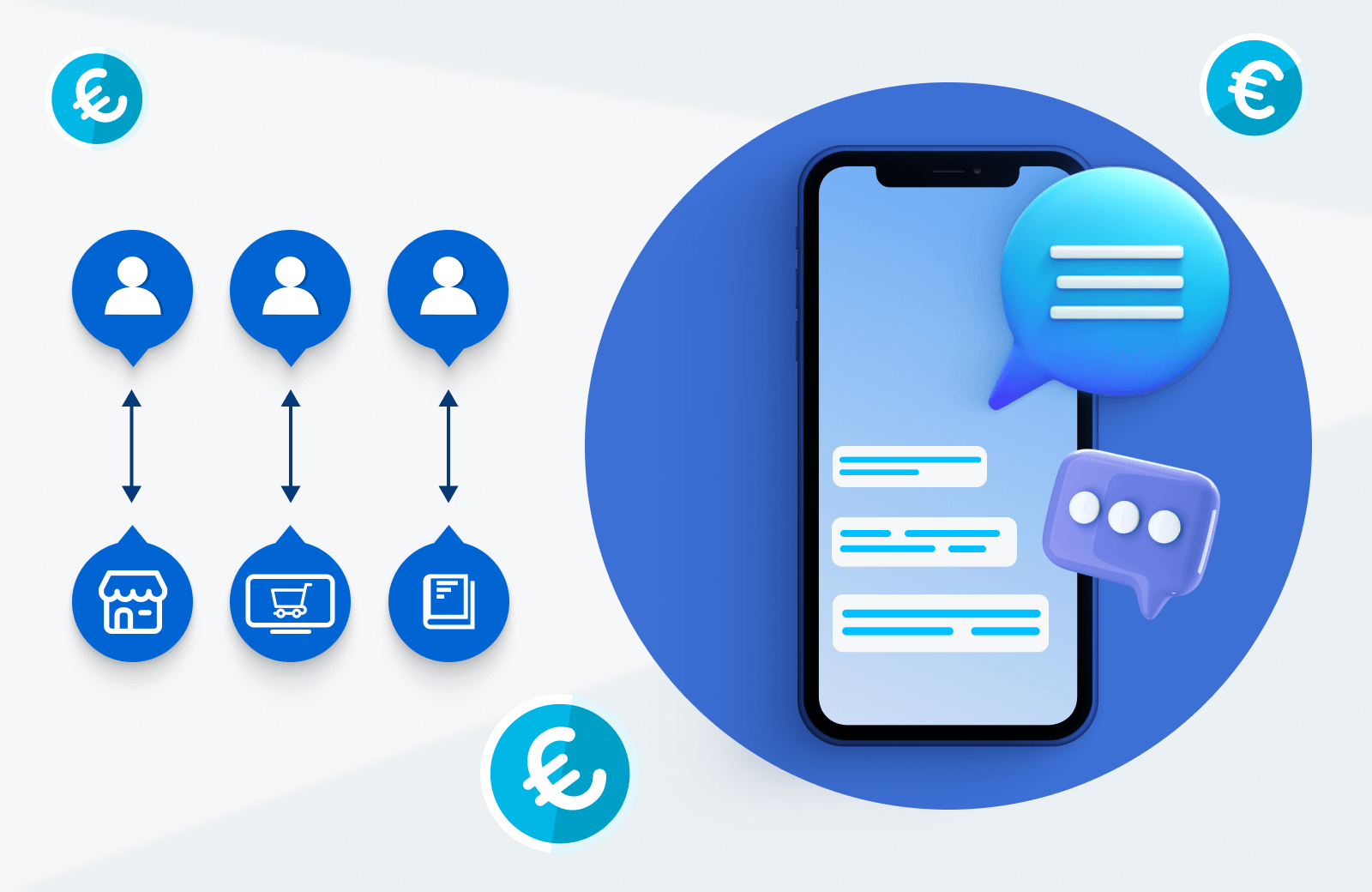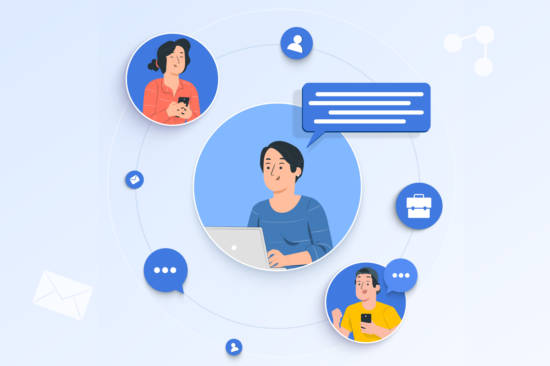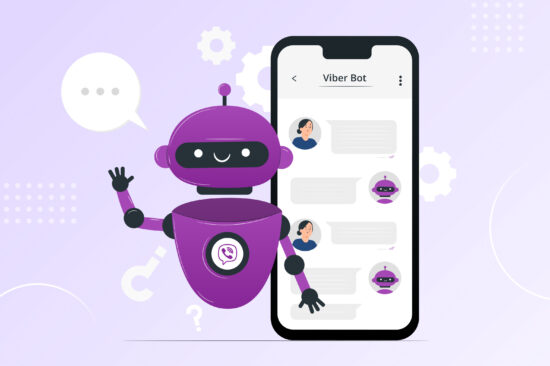Table of content:
With the growing popularity of messengers, more and more users prefer to receive content in Viber, WhatsApp, and other applications for chatting. And business is actively using the opportunity to develop trusting relationships with customers via messengers.
How does multichannel messaging work?
More and more tools for business appear in messengers every day. For example, these features are available in Viber:
Multichannel messaging allows you to deliver the message to the channel that the customer uses the most. For example, if the dispatch is sent in Viber, but the user does not have this application, then the message will be redirected to SMS. So the user will receive a service or advertising notice from the company’s Sender ID anyway.
Benefits of multichannel messaging
Reduces the cost of your marketing budget
Routing messages through the most profitable channels saves the cost of delivering content to customers. You pay only for delivered messages.
Delivers rich content to the messenger
Thanks to the ability to deliver service and advertising messages to messengers, you can enrich the text with various forms of content: images, emoji, call-to-action-buttons, as well as make personalized offers using the variables Name, Date, Amount, and others.
In addition, messengers support long messages. The text for sending can contain up to 1000 characters in Viber, up to 4096 characters in WhatsApp in any language, and up to 2048 characters in VK — more than enough to convey all the advantages of the offer.
Covers 100% of the recipient audience
Cascading messaging allows you to send messages first to the messenger, and then to SMS or another messenger if it was not possible to send to the first channel. A supported message template will be delivered to each channel. Therefore, messages will be received by all contacts from the database and each message will be displayed correctly.
You can reach even those users who are not in the contact database by an advertisement in the messenger. For example, in Viber, there are formats of embedded ads on the main screen of chats and in the calls tab, desktop display, and others.
Increases conversion of a messaging campaign
Different audiences prefer different messengers. Send a message to the user’s favorite messenger and show your offer among his private chats. Here the message from the company will not go unnoticed, and it is easier to involve the user in the dialogue. Communication in a familiar environment for the user helps to make a trusting relationship with the brand. Audience loyalty is the way to high conversions.
How to create a dispatch in Messaggio
Messaggio multichannel messaging platform supports messaging channels via SMS, Viber, WhatsApp, RCS, Mobile ID, VKontakte, and Odnoklassniki. Messaggio provides a multi-user, multilingual dashboard, message templating, free API, and operational statistics for each dispatch.
In the Messaggio dashboard, you can create a multichannel message template and carry out multichannel messaging. To deliver a message to a client in a convenient channel, you must:
- To register a Sender ID
- To make a contact group
- To create a message template
- To start messaging
A Sender ID is the brand name from which messages will be sent. The Sender ID is displayed in the message preview and in the header of an open chat. In the “Senders” section of your Messaggio dashboard, you can add the name in any of the messaging channels and send it for moderation. For multichannel messaging, you need to register a name in each of the messaging channels.
Contact group for sending — a list of messaging recipients with parameters for personalizing messages. Upload the client base in your dashboard in the «Contact groups» section. You can add contacts manually or import a CSV file. Assign variables to each parameter that you have in your database. It will help you personalize messages.
If you don’t want to send messages to specific users, create a contact group for exclusion.
Combine contact groups for dispatch and contact groups for exclusion. You can add and use both of them in the dispatch — it has no limit.
Read more about the options for uploading the client base in the knowledge base in the «Contact groups» section.
A message template is a combination of text, emoji, image, and CTA button that you send to the user’s messenger. Messaggio’s dashboard has an easy constructor of message templates, which is available in the “Templates” section. To create a multichannel template, you need to set the sender names in the channels that you want to use for sending messages. Pay attention that in the list of Senders ID, only those Senders ID that has successfully passed moderation are available to you.
To create a message, use the special layouts for each channel and add the variables which you have assigned when loading contact groups.
Customize the order of sending: if a message can not be delivered to the first channel, it will be redirected to the second, and so on. Submit the finished template for moderation. For more information about creating templates for each of the channels and activating templates, go to the knowledge base, the «Templates» section.
Create and start messaging: select activated template and contact groups. For multichannel messaging, you must have activated templates in those channels that you are going to use.
You can resend the completed dispatch, schedule it for the day and time that you want to, set up the period during which messages will be sent to all contacts, and cancel the scheduled dispatch until the start. Read about possible actions with messaging campaigns in the knowledge base in the «Dispatches» section.
Take advantage of the multichannel messaging of the Messaggio platform and keep in touch with your customers in a comfortable and unobtrusive context.
Ready to start mass messaging campaign?
Tell us about your task and we will offer a suitable solution.



